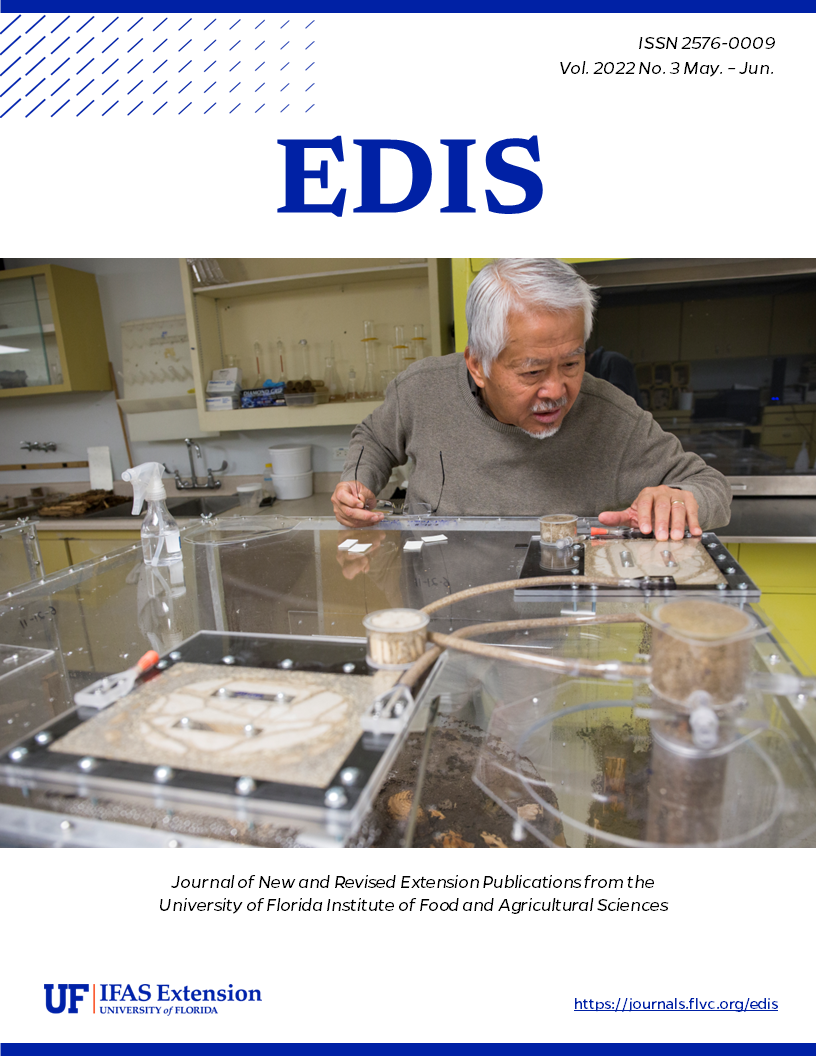Abstract
From red drum to red snapper, many of Florida’s fisheries are managed with specific consideration given to a quantity called the Spawning Potential Ratio (SPR). This conspicuous acronym is an important metric to fisheries biologists and managers. It helps determine harvest size limits for fisheries and drives regulations for both commercial and recreational fisheries. However, SPR is not especially intuitive to the general public or even agency personnel and Extension agents. This publication is intended to describe what SPR is and explain how and why it is used in managing fish stocks. We think it will help people better understand fisheries management decisions, the documents describing them, and the science behind them.
References
Addis, D., B. Mahmoudi, J. O’Hop, and R. Muller. 2018. “The 2016 Stock Assessment of Spotted Seatrout, Cynoscion nebulosus, in Florida.” Publication No. IHR 2018-004. Florida Fish and Wildlife Conservation Commission, Tallahassee, FL
Caddy, J. F., and R. Mahon. 1995. “Reference Points for Fisheries Management.” FAO Fisheries Technical Paper Number 347.
Camp, E. V., A. B. Collins, R. N. M. Ahrens, and K. Lorenzen. 2020. “Fish Population Recruitment: What Recruitment Means and Why It Matters.” EDIS 2020 (2): 6. https://doi.org/10.32473/edis-fa222-2020.
Camp, E. V., A. B. Collins, R. N. M. Ahrens, and K. Lorenzen. 2021. “Fish Population Recruitment 2: Stock Recruit Relationships and Why They Matter for Stock Assessment” FA234. EDIS 2021 (5). https://doi.org/10.32473/edis-fa234-2021
Chagaris, D., B. Mahmoudi, and M. Murphy. 2015. “The 2015 Stock Assessment of Red Drum, Sciaenops ocellatus, in Florida.” Publication No. IHR 2015-003. Florida Fish and Wildlife Conservation Commission, Tallahassee, FL
Clark, W. G. 1991. “Groundfish Exploitation Rates Based on Life History Parameters.” Canadian Journal of Fisheries and Aquatic Sciences 48:734–750. https://doi.org/10.1139/f91-088
Fisch, N. C., A. B. Collins, and E. V. Camp. 2021. “What is Stock Assessment?” FA232. EDIS 2021 (2): 5. https://doi.org/10.32473/edis-fa232-2021
Goodyear, C. P. 1993. “Spawning Stock Biomass per Recruit in Fisheries Management: Foundation and Current Use.” In Risk Evaluation and Biological Reference Points for Fisheries Management vol. 120, edited by S. J. Smith, J. J. Hunt, and D. Rivard. Canadian Special Publication of Fisheries and Aquatic Sciences, pp. 67–81.
Muller, R., A. Trotter, and P. Stevens. 2015. “The 2015 Stock Assessment Update of Common Snook, Centropomus undecimalis.” Publication No. IHR 2015-004. Florida Fish and Wildlife Conservation Commission, Tallahassee, FL
SEDAR. 2018. SEDAR 52—Gulf of Mexico Red Snapper Stock Assessment Report. SEDAR, North Charleston, SC. 434 pp. available online at: http://sedarweb.org/sedar-52.

